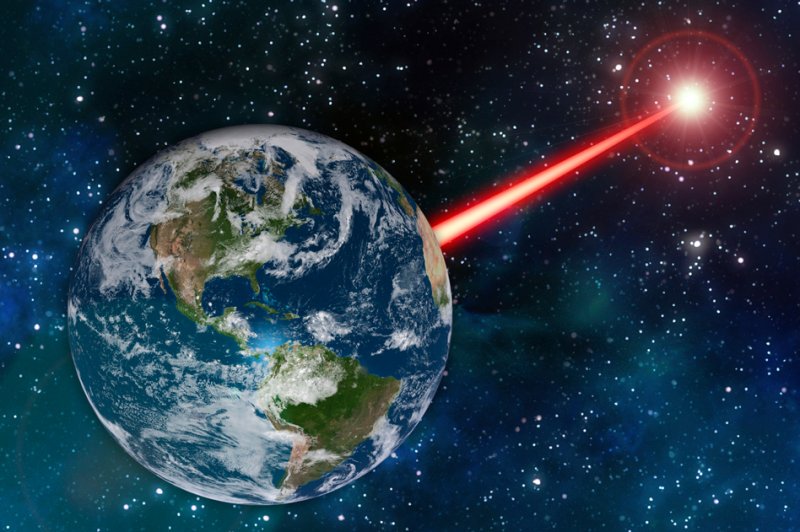An MIT study proposes that laser technology on Earth could emit a beacon strong enough to attract attention from as far as 20,000 light years away. Photo by MIT
Nov. 6 (UPI) -- Pointing a special laser from Earth could act as a beacon light to aliens in space, a recent study said.
The Massachusetts Institute of Technology study, published in Astrophysical Journal, proposes the idea of focusing a high-powered 1- to 2-megawatt laser through a large 30- to 45-meter telescope in order to produce an infrared beam that could shine into space.
That beam, said lead researcher James Clark, would be at least 10 times stronger than the sun, making it powerful enough to shine through the sun's energy.
"I wanted to see if I could take the kinds of telescopes and lasers that we're building today, and make a detectable beacon out of them," Clark said in a press release.
Clark said the megawatt laser could send Morse code signals to alien astronomers living in systems closest to the Earth such as Proxima Centauri or TRAPPIST-1, a star 40 light years away with three potentially habitable exoplanets.
"If we were to successfully close a handshake and start to communicate, we could flash a message, at a data rate of about a few hundred bits per second, which would get there in just a few years," Clark said.
He wants his laser to lead to more infrared imaging technology development, making it possible to communicate with aliens on other planets, or to spot gases in a far off planet's atmospheres that could indicate signs of life.
"It is vanishingly unlikely that a telescope survey would actually observe an extraterrestrial laser, unless we restrict our survey to the very nearest stars," Clark said.
"With current survey methods and instruments, it is unlikely that we would actually be lucky enough to image a beacon flash, assuming that extraterrestrials exist and are making them," Clark said. "However, as the infrared spectra of exoplanets are studied for traces of gases that indicate the viability of life, and as full-sky surveys attain greater coverage and become more rapid, we can be more certain that, if E.T. is phoning, we will detect it."















